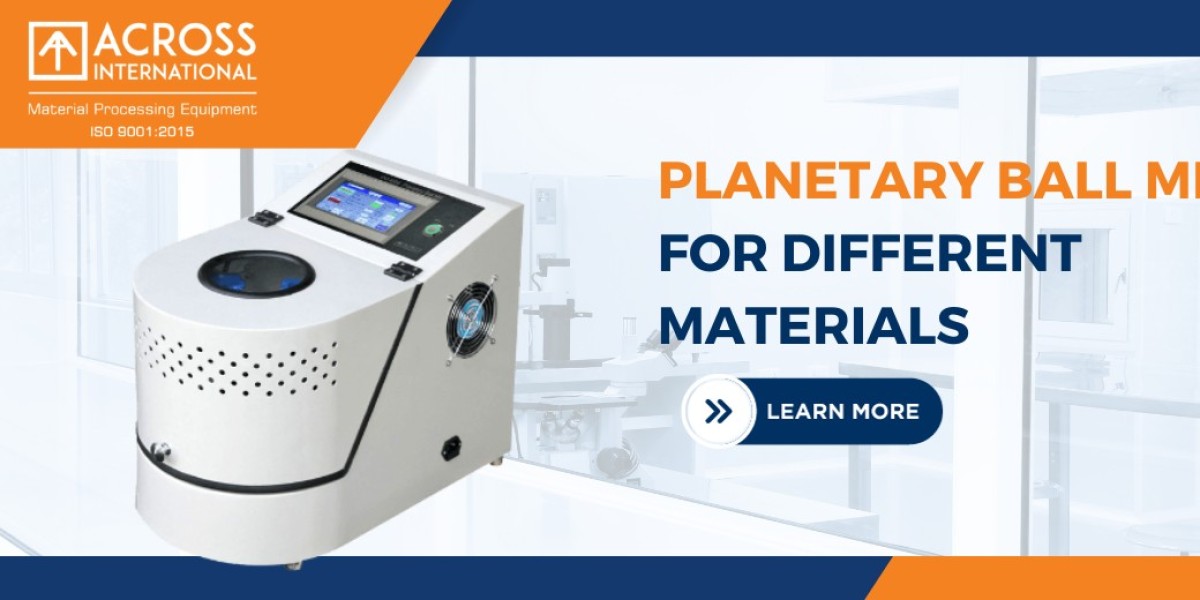Planetary ball mills are used for the pulverization of soft, hard, brittle, and fibrous materials in dry and wet mode. Extremely high centrifugal forces result in very high pulverization energy and therefore short processing times.
Planetary ball mills are ideally suited for tasks in research like mechanochemistry (mechano-synthesis, mechanical alloying and mechanocatalysis), or ultrafine colloidal grinding on a nanometer scale, as well as for routine tasks such as mixing and homogenizing.
A crucial advantage of planetary ball mills is their great versatility. They are available with different numbers of grinding stations. Jars and balls are available in various sizes and materials.
PLANETARY BALL MILLS - GRINDING JAR AND BALL MATERIALS
HOW TO CHOOSE THE MOST SUITABLE MATERIAL
If, for example, a sample is analyzed for its heavy-metal content, the abrasion of steel grinding jar and balls might introduce chromium into the sample which would lead to falsified analysis results. Therefore, a metal-free material like zirconium oxide should be selected. Another point to consider is the influence of the tool on the grinding efficiency. Here two aspects are important:
Energy input (related to the density of the material)
Hardness of the material
ENERGY INPUT
The energy input grows with increasing density of a material. If the material of the grinding jars and balls has a high density, like tungsten carbide, acceleration of the grinding balls is higher at a given speed compared to materials of lower density. This means the energy input is higher when the ball hits the sample and, consequently, the crushing effect is higher with dense materials. This effect is beneficial for pulverizing hard-brittle samples.
For soft sample materials, on the other hand, too much energy input can prevent effective crushing. In such cases, the sample is not really pulverized into a fine powder but rather forms a layer that sticks to the jar walls and covers the grinding balls. Homogenization is not possible that way and sample recovery is difficult. For soft sample materials, other mill types, for example rotor mills, are better suited.
HARDNESS
To find a jar and ball material with suitable hardness, the consideration is simple: The material must be harder than the sample. If the material is less hard, the grinding balls could be ground by the particles of the sample material.
GRINDING TOOLS OF DIFFERENT MATERIALS
It is not recommendable to use tools of different materials, e. g. a jar made of steel used with balls made of zirconium oxide. First, abrasion from both materials will influence the analytical result, and second, wear of the tools is increased.
PLANETARY BALL MILLS - RECOMMENDED JAR FILLINGS
FOR DRY GRINDING
For dry grinding, the best results are usually obtained with the so-called one-third-rule. This means, that approximately one third of the jar volume should be filled with balls. Following this rule, the smaller the balls are, the more must be taken to fill a third of the jar. Another third of the jar volume should be filled with sample material. The remaining third is free space to allow the ball movement inside to achieve the required comminution energy for fast pulverization of the sample.
Following this rule, the required crushing energy is provided while at the same time sufficient sample material is in the jars to prevent wear.
Read Here More About Planetary Ball Mill For Different Materials








